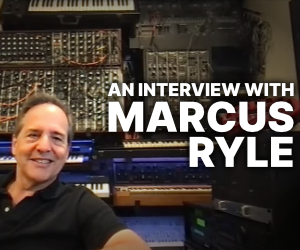
Spectrasonics debuted its new 'STEAM Engine' core technology at the Winter 2008 NAMM show. The new software, created by the company's in-house development team, will be used as the basis of all future Spectrasonics performance instruments, just as its core S.A.G.E. technology is used for groove-based instruments like the popular Stylus RMX. STEAM is important to Spectrasonics future because it completes the technology transition from earlier performance virtual instruments that were based on the licensed UVI Engine.
Virtual instruments built with the multi-timbral STEAM Engine offer many development possibilities into a variety of hybrid synthesis and control capabilities including high-resolution Streaming Sample Playback, Integrated FX, Variable Waveshape synthesis, Granular synthesis, FM synthesis, polyphonic Ring Modulation, Timbre Shifting, and a comprehensive Flex-Mod modulation routing system, to name a few.
"The STEAM Engine core technology gives us the ability to respond to other technology changes like the Intel-Mac shift from Apple, 64-bit computing, or a major new operating system," said Eric Persing, Founder and Creative Director of Spectrasonics. "The new in-house technology will allow us to create instruments that we can fully support across industry changes and allow us to make innovations and transitions faster in the future. For example, just as Stylus RMX being based on our S.A.G.E. technology made possible the early compatibility with Apple's Intel-Macs, new instruments based on STEAM technology will make transitions like this easier on our customers."
In the past, Spectrasonics has licensed its core technology to create some of its virtual instrument products. Now with STEAM, new products are being created from the ground up that support the company's long-term vision of the highest-quality sounds and the most musically intuitive user experience.
Virtual instruments powered by STEAM also have unlimited expansion possibilities. The new core software is flexible and open - allowing patches to be shared across hosts and computer platforms. Spectrasonics can also add new patches and sounds to the core library giving the user an ever-expanding sonic palette. In addition, all Spectrasonics virtual instruments based on S.A.G.E. and STEAM technologies can interact in musically useful and innovative ways for a smoother creative flow.
The first virtual instrument built with the STEAM Engine, Omnisphere, is set to be released September 15th, 2008, and has a suggested retail price of $499. Future STEAM-based instruments are TBA.



 Other Related News
Other Related News


